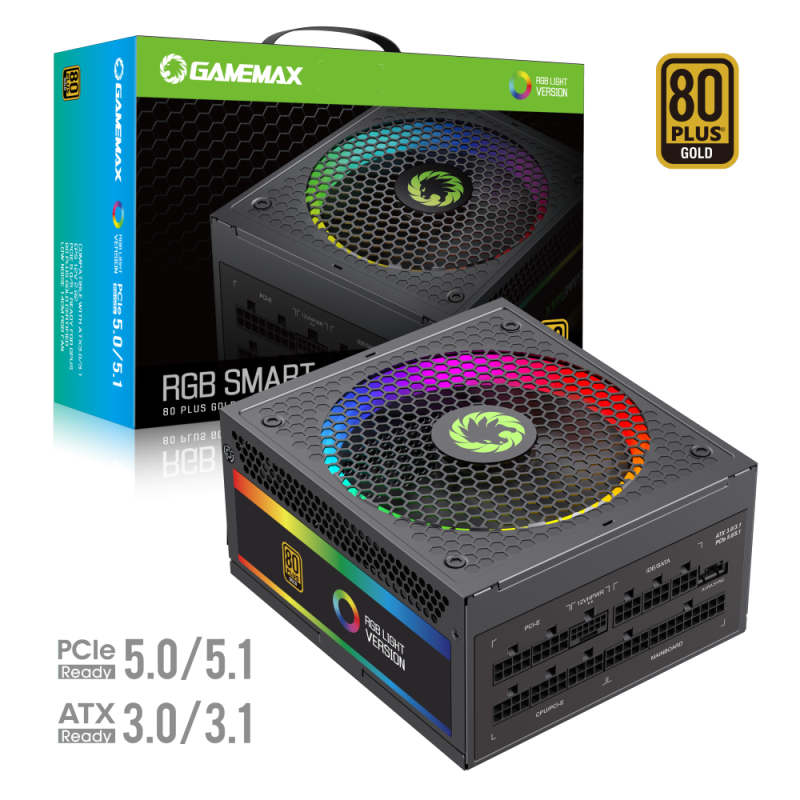When building or upgrading a PC, one of the crucial considerations is selecting the appropriate power supply unit (PSU). This is especially important when installing high-end components like the NVIDIA RTX 4090 graphics card. The RTX 4090, being one of the most powerful consumer GPUs available, demands a significant amount of power. This article will guide you through the process of calculating the necessary PSU wattage, answer common questions about power supplies, and recommend a suitable GameMax power supply for your needs.

To determine the appropriate PSU wattage for a system with an RTX 4090, you need to consider the power consumption of all the major components in your build. Here’s a step-by-step guide to calculating the required wattage:
Identify the Power Consumption of Each Component: Power Supply Calculator
Graphics Card (RTX 4090): The RTX 4090 has a typical power consumption of around 450 watts. However, this can vary based on the manufacturer and specific model, so always check the official specifications or manufacturer’s guidelines.
CPU: Modern high-end CPUs like the Intel Core i9 or AMD Ryzen 9 typically consume between 125 to 250 watts under full load. For this calculation, assume an average of 200 watts.
Motherboard: The motherboard’s power consumption varies depending on its features and number of components. Typically, it consumes around 50 to 100 watts.
RAM: Each stick of RAM generally consumes about 5 to 10 watts. For a system with 4 sticks, this totals around 20 to 40 watts.
Storage Drives: Solid-state drives (SSD) consume about 5 to 10 watts each, while hard disk drives (HDD) consume about 10 to 15 watts. Assume a total of 20 watts for two SSDs and one HDD.
Fans and Other Peripherals: Additional components such as case fans, RGB lighting, and USB devices can consume between 10 to 50 watts in total.
Add Up the Total Power Consumption: Summarize the power consumption of each component:
Total power consumption = 450 + 200 + 75 + 30 + 20 + 30 = 805 watts
RTX 4090: 450 watts
CPU: 200 watts
Motherboard: 75 watts
RAM: 30 watts
Storage Drives: 20 watts
Fans and Peripherals: 30 watts
Apply a Safety Margin: It’s important to have some headroom beyond the total calculated wattage to ensure reliable operation and accommodate potential future upgrades. A common recommendation is to add 20-30% to the total power consumption. For an 805-watt requirement, this means:
Required PSU wattage = 805 watts × 1.25 = 1006 watts
To simplify, it’s advisable to round up to the next standard PSU wattage. In this case, a PSU rated at 1200 watts would be suitable, providing ample headroom and ensuring stable power delivery.
What is the difference between a standard PSU and a high-wattage PSU?
Answer: A high-wattage PSU provides more power than a standard PSU, allowing it to support more demanding components and future upgrades. It also offers more stability and less strain on the PSU, leading to improved reliability and performance.
How do I know if a PSU is compatible with my components?
Answer: Compatibility depends on several factors, including wattage, connectors, and physical size. Ensure the PSU has the necessary connectors for your GPU, CPU, and other components. Check the PSU’s form factor to ensure it fits in your case.
What is the importance of 80 Plus certification?
Answer: 80 Plus certification indicates the PSU’s efficiency. A certified PSU converts a higher percentage of power from the wall into usable power for your system, leading to lower electricity bills and reduced heat output. Higher certifications (Gold, Platinum, Titanium) offer better efficiency.
Should I opt for a modular or non-modular PSU?
Answer: Modular PSUs allow you to connect only the cables you need, reducing cable clutter and improving airflow. Non-modular PSUs have all cables permanently attached, which can lead to cable management challenges. Modular PSUs are generally preferred for clean and organized builds.
What protection features should a PSU have?
Answer: A good PSU should include protection features such as Over Power Protection (OPP), Over Voltage Protection (OVP), Under Voltage Protection (UVP), Short Circuit Protection (SCP), and Over Current Protection (OCP). These features help safeguard your components against electrical faults and damage.

For a build featuring the NVIDIA RTX 4090, the GameMax RGB 1050W power supply is an excellent choice. Here’s why:
Power Capacity: With 1050 watts of power, this PSU provides ample headroom for high-performance components and future upgrades.
80 Plus Gold Certification: Ensures high efficiency, reducing energy waste and keeping your system running cooler.
Fully Modular Design: Allows for clean cable management and easy installation.
RGB Lighting: Features customizable RGB lighting to enhance the visual appeal of your build.
Advanced Cooling: Equipped with a 140mm fan for effective cooling and quieter operation.
Comprehensive Protection: Includes multiple protection features to ensure safe and reliable operation.
The GameMax RGB 1050W power supply is designed to meet the demands of high-end systems, making it a perfect match for your RTX 4090 setup. Its robust performance, efficiency, and aesthetics will elevate your PC build, ensuring both power and style.